
10 Useful Tips for First-Time Car Campers
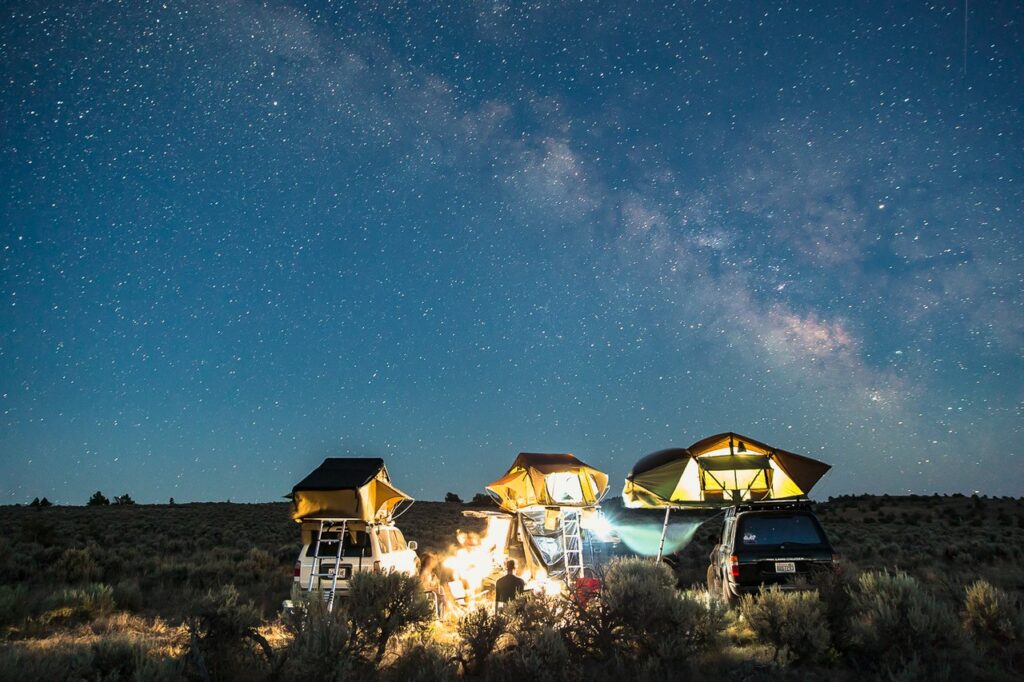
Do you have (or have access to) a car? Do you have a desire to wake up in a park? Well, good news: you’ve already covered the two most essential requirements for car camping!
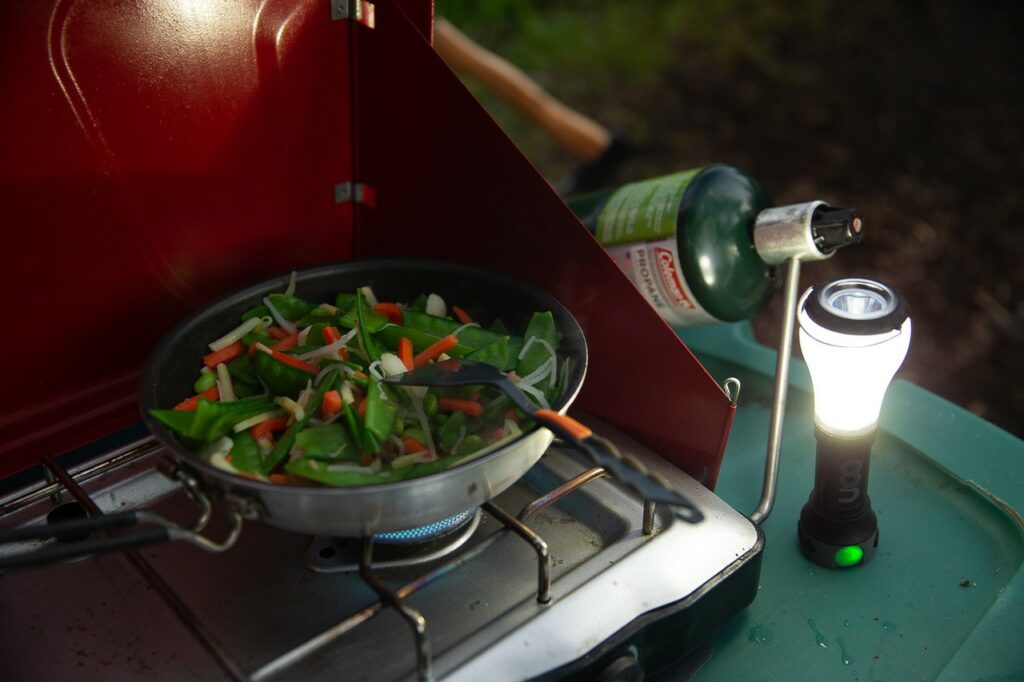
That said, there are a few more things it’d be helpful to know to make the car camping experience a bit more pleasant. For starters, it helps to know what car camping is. It’s any camping experience where you drive to your campsite instead of hiking in; the latter of which is often referred to as backpacking, or through-hiking. The vast majority of car campers use tents, but it’s not unheard of to sleep in your car in a pinch, especially if you’re camping in an undeveloped area.
Whether you’re a first time camper or just responsible for packing for the first time, here are 10 helpful tips for your first car camping experience.
Check if your mattress is compatible.
My car has cigarette lighters on both the center console and the trunk, which is great. What’s not so great is that only one of them works now, because I blew a fuse on one when trying to fill up an air mattress. Air mattresses are great to have car camping (especially if you’re all about glamping) since all you’ll need is a vehicle pump/inflator, which is pretty inexpensive. Before you get to your site, however, make sure that the pump and the plug are compatible (your owner manual and instruction booklet should tell you the voltage.) You don’t want to get to blow out your car’s power source and end up sleeping directly on the ground. Half-filled air mattresses do not a glamping experience make.
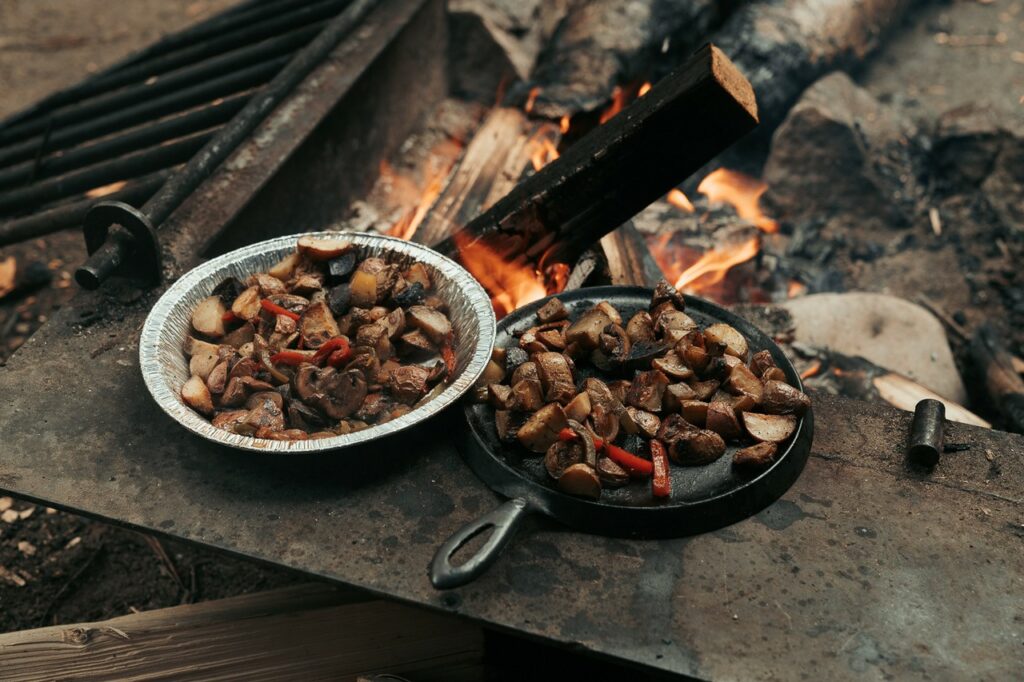
2. Don’t stress about weight
There’s a lot of chatter in camping communities about the benefits of lightweight gear, which can make a beginner camper worry about not having the latest and greatest. But here’s a secret for car camping: your major pieces of gear (like your tent or cooking stove) don’t need to be very lightweight – which means they can be a lot more affordable. If the weather allows for it, you can even forego some gear and instead bring what you have at home – you may be able to not bother with a sleeping bag and instead just bring a comforter from your bed, for example, if the weather looks clear and warm. UCO Gear makes some very affordable pieces that may not be the lightest on the market, but they’re high in quality and very durable. A great example is the Flatpack Grill, which allows you to have a grill at your fingertips whenever you need it. It’s a bit too heavy for distance backpacking, but at $50, it’s a steal for car campers.
3. Don’t forget water
You may think you don’t need to worry about water if you’re at a campsite, but that’s only partially true. Campsites have shared bathroom facilities where potable water is available, but it’s unlikely that it’s going to be right next to your campsite. In addition to needing water to drink, you’ll need water to cook and plenty of water to douse your fire. So be sure to bring a gallon jug or large container with a spout that you can fill at the source. It’s going to get pretty annoying walking back and forth from the bathroom if you need to try and put out your fire one Nalgene bottle at a time.
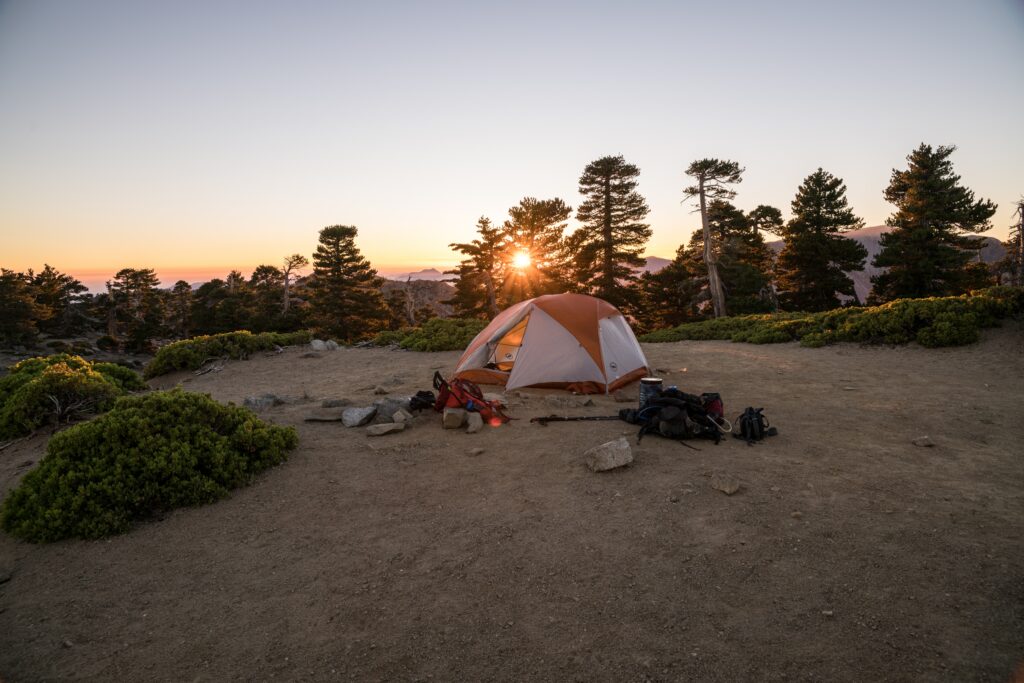
4. Make sure you know how to set up your tent
This doesn’t just mean “set up your tent at home before you get to your campsite,” though that’s, of course, a no-brainer. What’s really important for car camping is knowing how your tent is secured and whether your site will accommodate it. Nearly all tents are either freestanding or staked in, but a staked-in tent won’t work at sites that are rocky or have raised, wooden camping platforms. So you’ll need to either find a freestanding tent or come up with an alternate solution to staking. It’s best to do this in advance, as most campers will agree sleeping in a collapsed tent puts a bit of a damper on the experience.
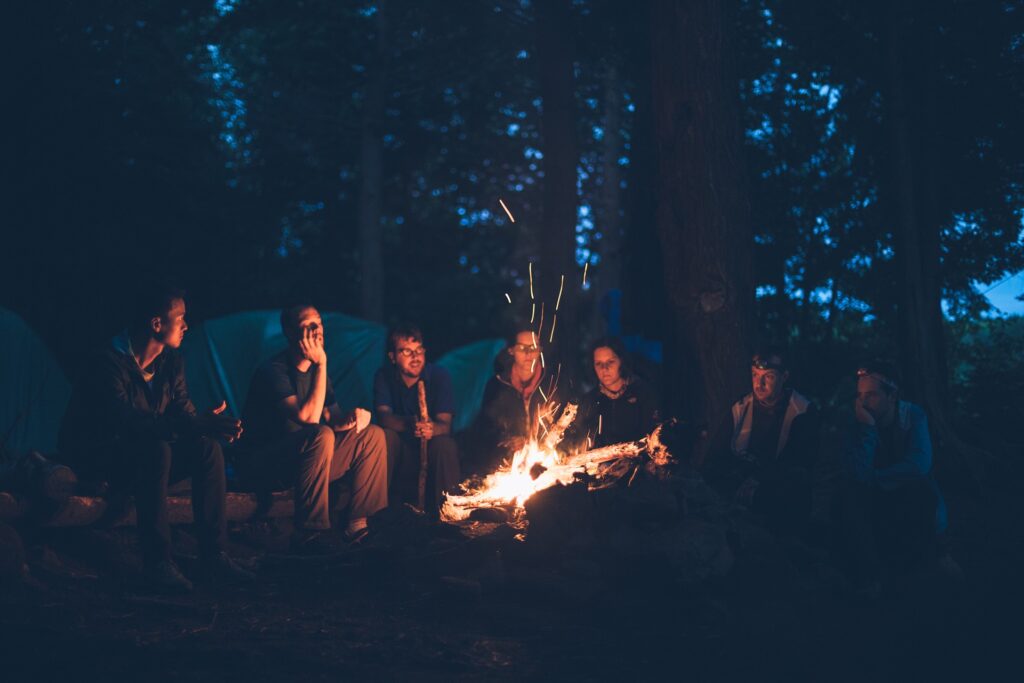
5. Bring a hands-free headlamp
Car camping is fun. Waking up the next morning and realizing your car battery is dead is not. As such, you should bring a headlamp rather than relying on your car light. Headlamps are extremely affordable and leave your hands free, making them ideal for when you’re abiding by tip number 3 and trying to carry your water jug back in the dark. Since most car camping sites provide picnic tables, you’ll probably also want a secondary light source, like a lantern, to set up next to your cooking area. UCO Gear makes lanterns with built-in USB chargers, which can be helpful if you’ve forgotten to charge your portable speaker. Headlamps are also quite useful in tents, as many have small, mesh pockets near the top to hold your headlamp, creating an overhead lamp of sorts.
6. Be bear (and other animal) aware
If you google “car camping,” you’ll see that some people say you should store your food in your car. Some, however, will say never to store food in your car. And they’re both correct. Where to store your food and other items with a scent (like deodorant and toothpaste) depends largely on where you’ll be camping, which means you need to know the local rules and regulations around animals. I’m fortunate enough to live near Yosemite National Park, and if you leave food in your car there, you’ll wake up with smashed windows and a good chance of bear poop in your car. However, if you’re closer to an urban center, you may be required to keep food locked in your car to keep away mice and vermin. It only takes a few minutes to brush up on regulations but could be the difference between life and death for bears, who are often euthanized if they have too many encounters with humans.
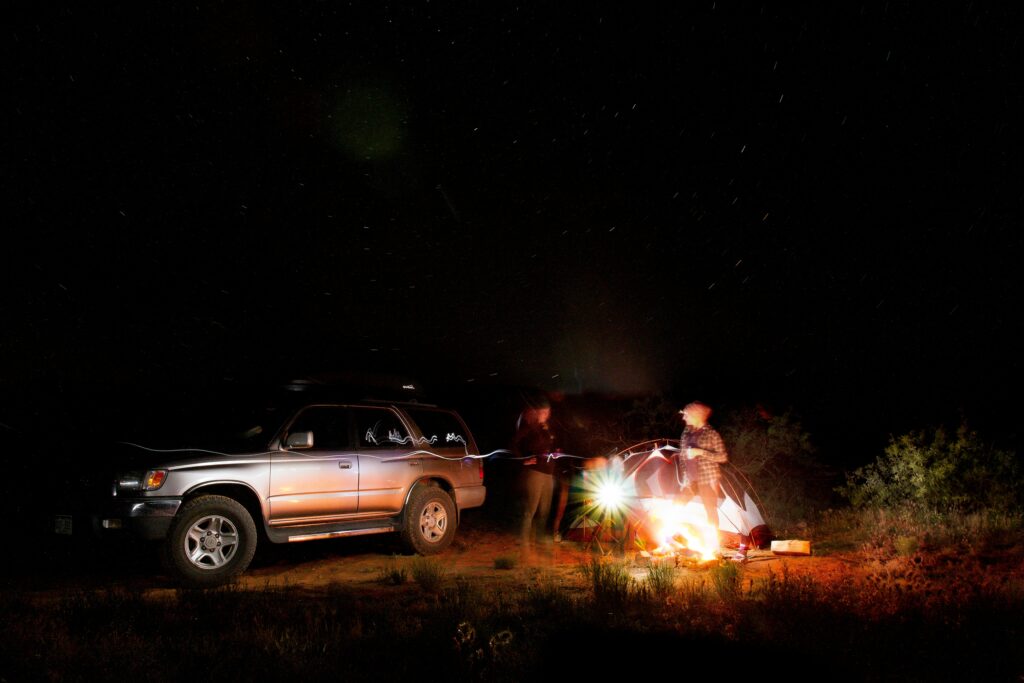
7. Carpool!
If you’re camping with a few people coming from different locations, you’ll need to make plans to carpool in advance at many sites. That’s because it’s common to have a limit on the number of cars you’re allowed to have at each campsite (it’s usually two.) If you’re in a state or national park, your best bet is to check the park’s website to find which lots allow for overnight parking and make plans to leave a few cars at that location. Remember, however, that the same animal rules apply: you may need to use a bear box, even in a parking lot (bear bins are often provided around camp parking lots.)
8. Keep It Clean
I know – after you’ve been hiking all day and sitting around the campfire all night, you’re not in the mood to do the dishes. But you should, especially since plates with caked-on food are about a thousand times harder to wash the next morning. Most campsites have specific rules about how and where to wash your dishes; no washing in the bathroom sinks is a common rule. Many campsites have dedicated outdoor sinks for washing your dishes, and you’ll almost always need to bring your own soap. I use an UCO Gear mess kit (which retails for under $15) as it’s simple and easy to clean. It also packs together into a hangable package, so you can hang it from a clip at night to ensure it’s clean and dry in the morning.
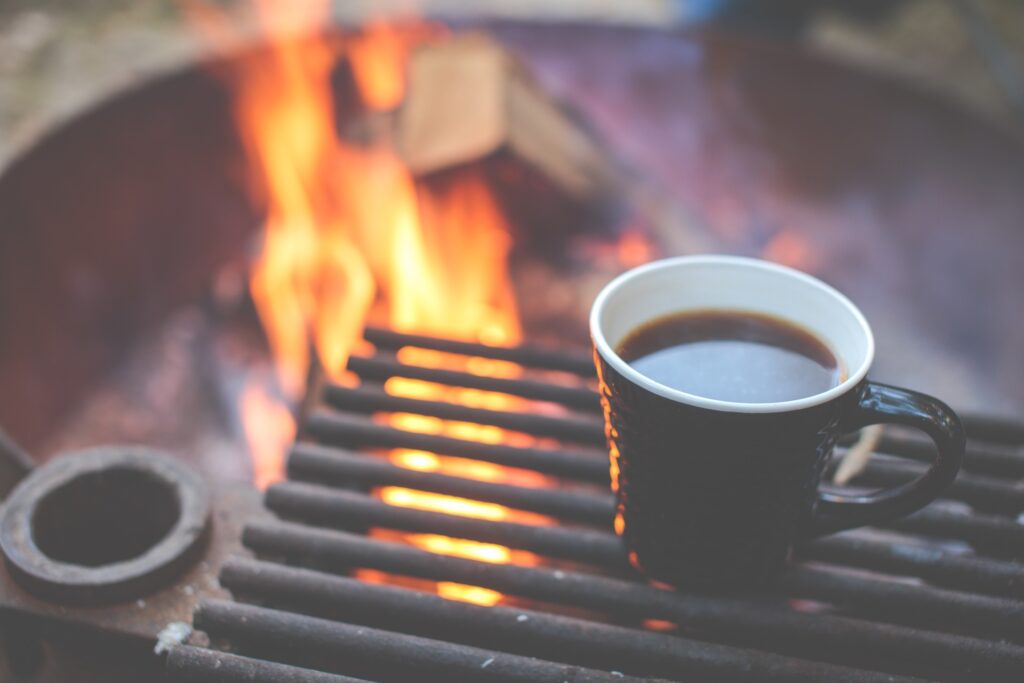
9. Remember the random items you’ll need…
You may take for granted the things you use at home and forget that you’ll need to bring them with you on your trip. Often-overlooked items include cooking utensils, a dishwashing sponge (and baggie to store it in if it’s wet,) duct tape (essential for rips or tears in your tent) and flip-flops, which you’ll want to walk to the restroom in the middle of the night. Car camping allows you to bring much more than just the essentials, so if you think you may need something, bring it.
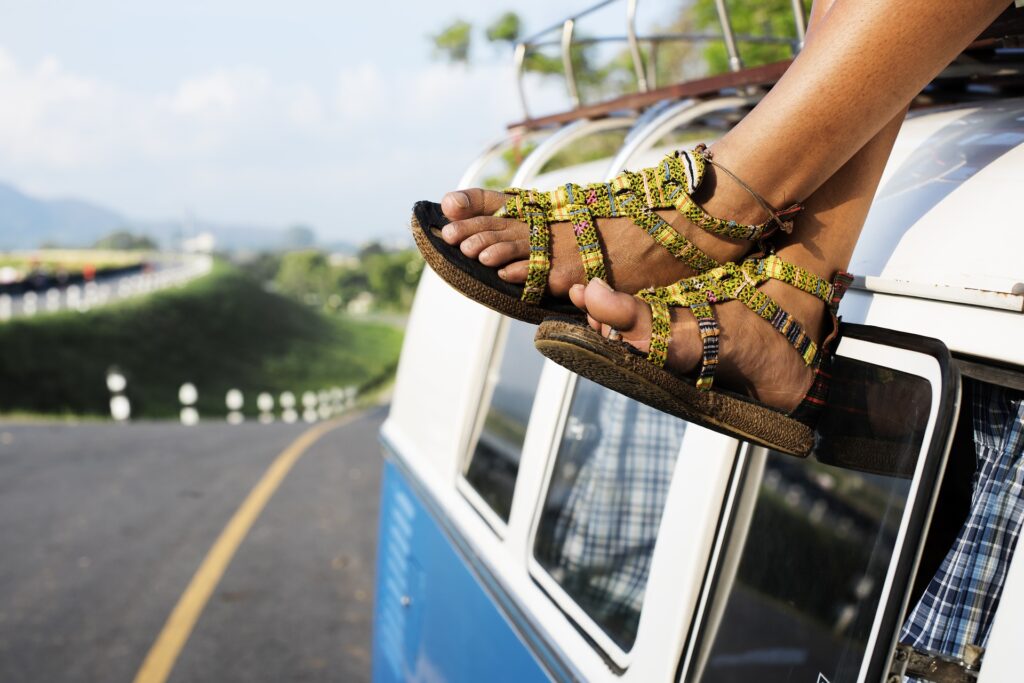
10. Crack a window
On some occasions, you may end up sleeping in car. It could be because you arrived late to a campsite and plan to get up early and hike the next day, so you don’t feel like setting up camp. Or, you could be parked on U.S. Forest Service land (which is perfectly legal to camp in, by the way!) and not planning on staying long. Regardless, here’s a tip: always crack a window. And though it may seem counterintuitive, it’s especially true in the winter. When you sleep, you create condensation in the vehicle. Just like in a tent, you need air flow to ensure that moisture doesn’t build up and make you wet and cold. An inch or two will do, and it doesn’t matter which window you crack, but make sure one is at least a smidge open.
By Suzie Dundas

